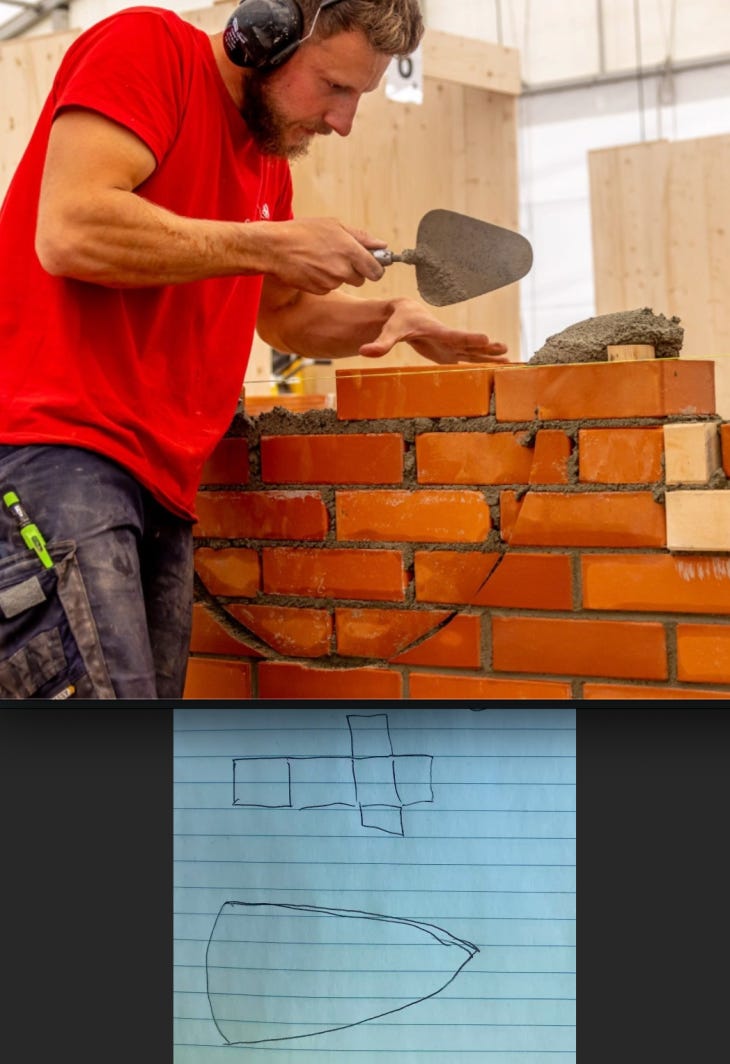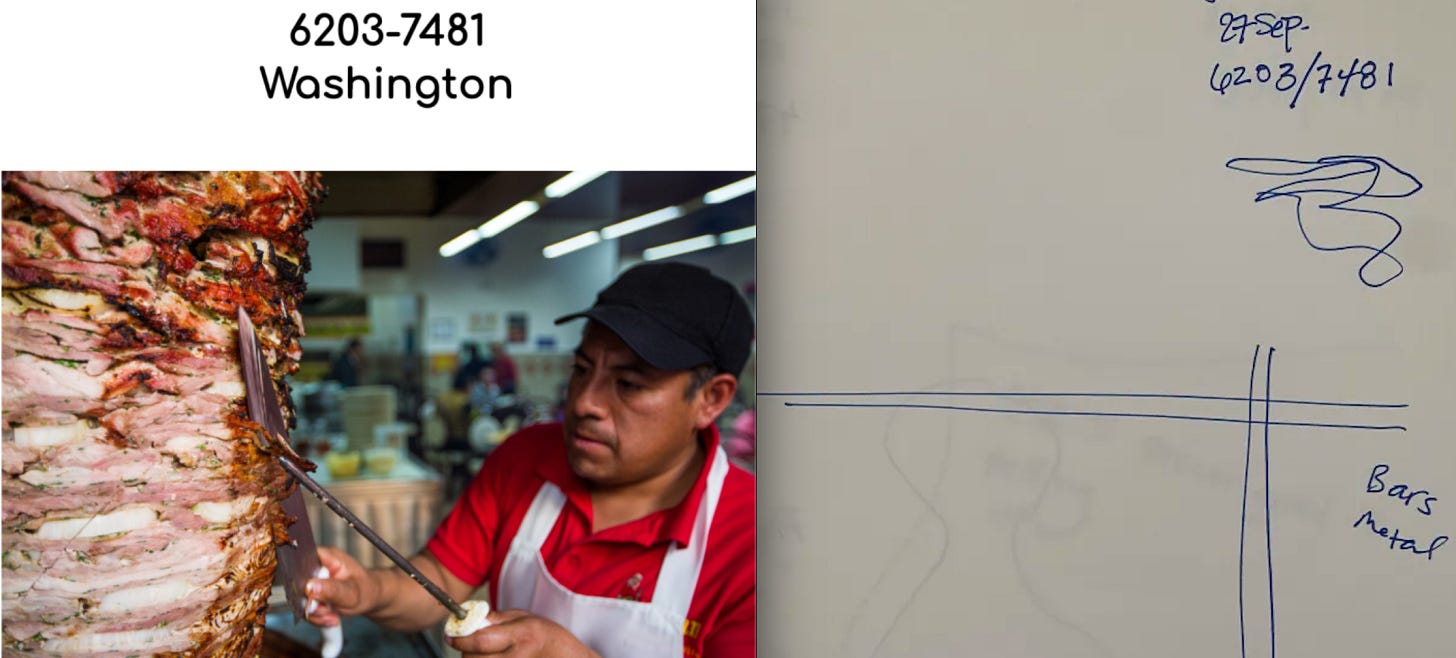Stunning Remote Viewing Sessions
by Psi
We’ve been remote viewing the NFL for years now. Or, more accurately, using associative remote viewing to make predictions of NFL games. If you search our archive, you’ll find tons of updates on how we’ve done over the years.
Basically, we associate two teams in a game with two separate photos. We ask remote viewers to “view” the image they will be shown in the future, and use these sessions to make a prediction. The game happens, and we send the image associated with the winning team to the remote viewers to complete the feedback loop. It’s not necessary for the viewers to know what game is associated with what target, or even to know anything about football at all. The “associative” aspect of ARV keeps everything totally blind to the participants, so no “football knowledge” is responsible for any psi predictive effects observed.
I’m going to showcase some of our greatest “hits” — sessions where viewers nailed the photo associated with the winning team, often with stunning accuracy. Keep in mind that these sessions all occur at least one day before a game is played, often longer. Furthermore, the viewing is often done before the target photos are even chosen (blind to the sessions, of course), meaning not only are the viewers predicting future results of a sports game watched and gambled on by millions of people, they’re viewing something that hasn’t even been chosen yet — basically viewing the future twice. To me, this is the most fascinating aspect of the story.
Let’s check out some sessions:
Above, the viewer was able to determine that the target was “dry, but with water sources around”, a pretty stunning hit. Enough to easily distinguish between two photos (associated with two teams), and enough to predict the winner.
This one speaks for itself. The viewer got a direct drawing of pyramid shown. Given the endless variety of photo subjects to choose from, it boggles the mind that we are able to accurately draw a photo we’ve never seen before. Remote viewing is 100% real.
The same viewer that honed in on the pyramid was able to hone in on the trowel and brick pattern. Even if the photo’s subject are unclear to the viewer himself, his drawings are enough to clearly determine a winning photograph and team.
Absolutely no problem determining which photo this session should be associated with. Stunning work.
“Like a Spanish conquistador helmet!” — While not 100% accurate, quite accurate enough and nails the overall gestalt of the target photo.
Clearly tuned in to the iron bars in a 90 degree angle pattern. No question that this session describes the iron city art installation.
Here you can see how we set up sessions, a “target number” associated with a photo and team. The “target” is simply the photo associated with the winning team in the future. As noted before, it’s not necessary to alert the viewers that they’re viewing a particular team, or even that they’re viewing the outcome of a football game whatsoever! All they are provided with is a list of 8-digit numbers exactly like the one shown.
“Metal bars” touching, enough to associate this session with the knives in the photo!
More often than not, multiple viewers will hone in on the same (or distinct) aspects of the target photo, painting a fuller picture.
Many times this season (only six weeks in at this point!) multiple viewers have tuned into the same “word” in their session. Once, two viewers wrote down “crystalline” for the same target. Another target, three viewers wrote down “mountains”, while two of those three wrote down “windy”.
The odds of this happening by chance once, let alone multiple times, week in and week out, are astronomical. We do every NFL game every week. For the “crystalline” example, there were 16 games that week, meaning all teams played. This means that 16 target numbers were presented to the viewers, totally randomized.
Imagine if I hid a ball from my friend behind 16 cabinets, and told her to guess what cabinet the ball is behind. If she’s guessing randomly, that’s a one-in-sixteen chance she guesses correct — or just over 6 %. Now assume I make the task harder, and write one of eight random words on the ball, then hide it behind one of 16 cabinet doors. I tell her to not only guess the correct cabinet, but guess the correct word written on the ball. Odds of predicting by chance just dropped to 0.78 %.
Now picture I tell her to not only guess the cabinet where the ball is hidden, but guess the word written on the ball out of every word possible in the dictionary. This is essentially what’s happening here. Even if I give her three or four word guesses, the chances of this happening are incredibly slim. Yet it has already happened multiple times this month with our small group of remote viewers. I’m confident it will happen again.
Of course, not every session is a target hit, and not every prediction pans out. The psi effect on predicting future outcomes is generally small, but very real. If the statistical power (in the “mathematical term” sense) shown in psi studies was required by pharmaceutical drug trials to pass FDA regulation, virtually no drug would be approved. By any standard of statistical science, psi phenomena are 100% real beyond a shadow of a doubt.
What’s even funnier about our experiment with the NFL is we’re all novice amateur remote viewers. I have about three years of intermittent RV practice, and some of our best hits come from absolute beginners. Anyone can do this.
Although we have a goal of achieving the highest level of accuracy possible, and make no efforts to stop anyone in our group from wagering money on these predictions, the broader effect of practicing psi weekly is an increased connection to one’s subconscious, increased intuition, better decision making — I’ve noticed lots of subtle benefits, and essentially no drawbacks, besides the time investment, since I’ve began. I can’t see myself stopping this practice any time soon.
Try it out, and let us know what you find.












